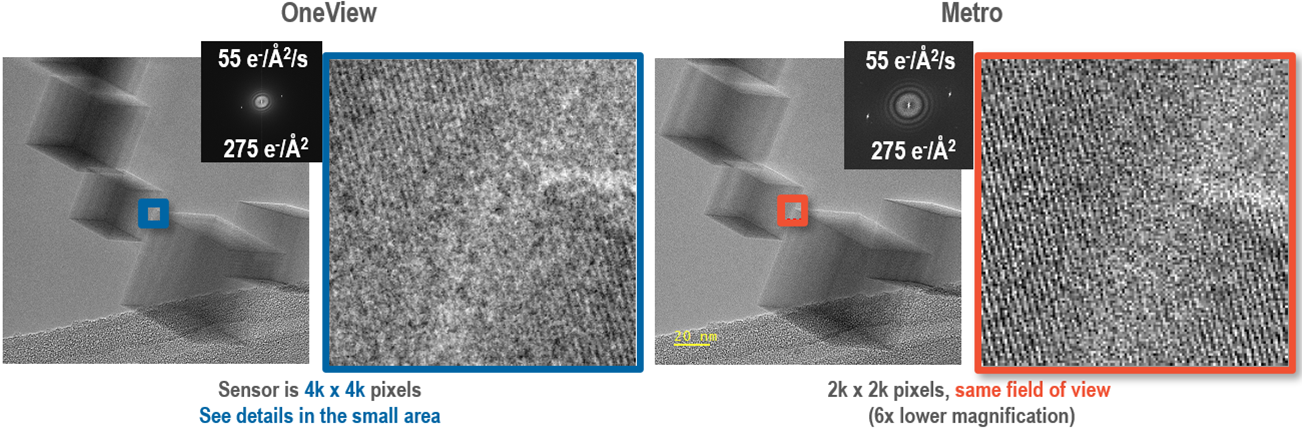Metro – A new direct detection TEM camera for materials science applications
- Abstract number
- 548
- Corresponding Email
- [email protected]
- Session
- EMAG - In-situ EM Techniques & Analysis
- Authors
- Dr. Robert Hill (1)
- Affiliations
-
1. Gatan/EDAX
- Keywords
imaging, diffraction, in-situ, direct detection, electron counting, counting camera, low-dose in-situ, 2D materials, semiconductors, batteries, catalysts, nanotubes, polymers, organic materials, biological materials
- Abstract text
Metro® is Gatan’s newest direct detection electron counting camera for ground-breaking imaging, diffraction, and in-situ studies. Metro brings direct detection capabilities to low accelerating voltage (60 – 200 kV) microscopy experiments and improves on ease of use, making challenging analysis on beam-sensitive samples much more straightforward. With Metro, you can push the research boundaries for 2D materials, semiconductors, batteries, catalysts, nanotubes, polymers, and organic/biological materials.
Electron counting removes virtually all background noise in an image, thus producing imaging and diffraction data with much higher quality and signal-to-noise ratios compared to a scintillator-based camera. Low-dose in-situ experiments and 4D STEM experiments also benefit from electron counting with Metro, which can acquire data at nearly 500 fps for high temporal resolution video and rapid 4D STEM scan speeds with Gatan’s STEMx®.
Moreover, DigitalMicrograph® provides all the software tools needed for processing in-situ data and analyzing 4D STEM data to generate strain maps, virtual aperture images, and differential phase contrast (DPC) images.
Figure 1. Metro 2k image (right) of the same field of view as a OneView® image (left), showing that the lattice fringes are still clearly resolved due to the high DQE and minimal blurring of the Metro.

